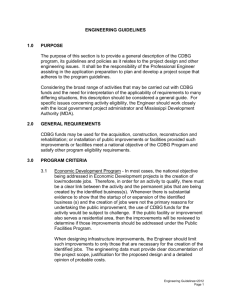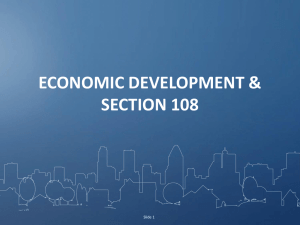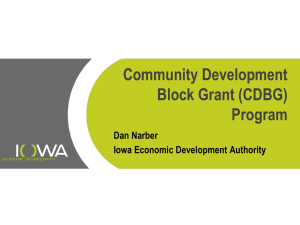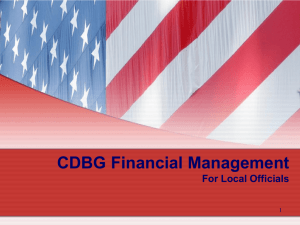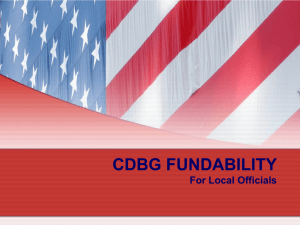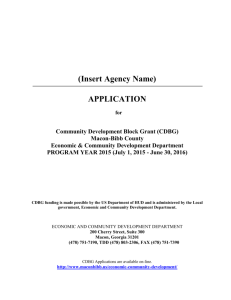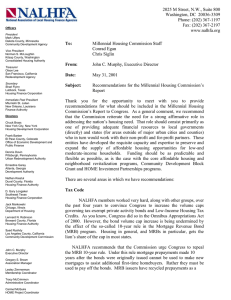From MFP to CDBG2
advertisement
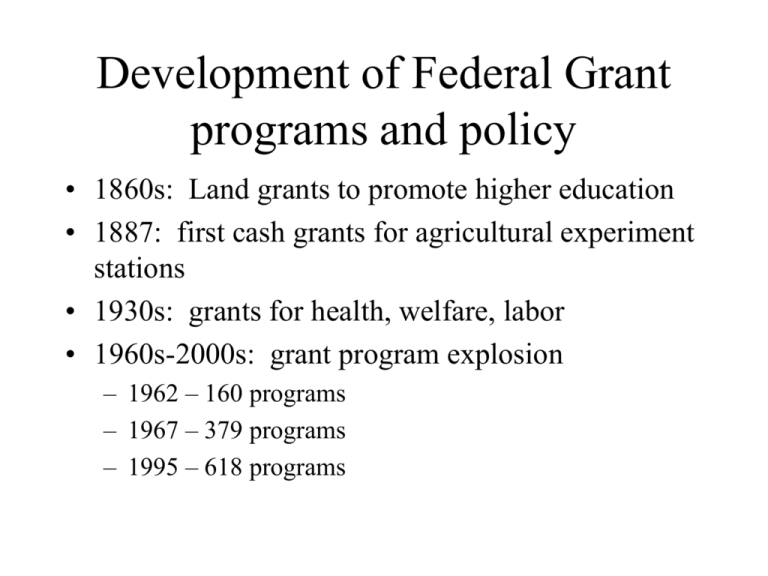
Development of Federal Grant programs and policy • 1860s: Land grants to promote higher education • 1887: first cash grants for agricultural experiment stations • 1930s: grants for health, welfare, labor • 1960s-2000s: grant program explosion – 1962 – 160 programs – 1967 – 379 programs – 1995 – 618 programs Development of Federal Grant programs and policy • Equal Opportunity Act (1964) “War on Poverty” – Title II-A: Community Action Programs • Purpose: to stimulate local communities to develop programs to attack poverty • Up to 90% federal financing of approved projects • “…developed, conducted, and administered with the maximum feasible participation of residents…” Development of Federal Grant programs and policy • 1966: Demonstration (Model) Cities Act – “…improving quality of urban life…the most critical domestic problem facing the United States…” – Small number (10-20) of model cities to be designated for generous and assistance. 63 were included. – Demonstration agencies to be closely tied to local elected officials’ discretion Development of Federal Grant programs and policy • 1966: “Creative Federalism” hearings – duplication and overlap of programs – Lack of uniformity across programs • Failure of federal priorities to recognize local needs • Variety of matching fund requirements • Promoted programs based on “easy money” – Uncertainty about amounts and timing – Grantsmanship more important than needs Development of Federal Grant programs and policy • 1967: The Green Amendment – Local poverty agencies must be designated by state/local governments – Shift in emphasis from political action to service provision Develop Development of Federal Grant programs and policy • Nixon’s “New Federalism” – General Revenue Sharing – Block grants • Urban community development (CDBG) • Manpower training (CETA) • Never enacted – – – – Education Transportation Rural community development Law enforcement CDBG Objectives • Benefit low- and moderate-income persons • Prevent of eliminate slums or blight • Meet urgent community needs Unique Characteristics of CDBG • Predictable flow of funds to states, localities • Flexible, locally controlled use Development of Federal Grant programs and policy • Omnibus Budget Reconciliation Act, 1981 – Consolidated 57 categorical grants into 9 block grant programs – “Everything that can be run by state and local governments we shall turn over to state and local governments” – Small Cities Community Development Grants Distribution of CDBG funds • State and local officials are important in determining redistributive effects of CDBG funds • Tendencies of state/local governments – targeting CDBG funds varies – tend to spread benefits widely • Benefit coalitions shape federal program outcomes • Benefit coalitions with a strong federal partner are more likely to succeed in obtaining targeted funds Factors affecting CDBG Targeting • Unemployment in the state • Proportion of funds allocated by state officials • Competitiveness of state politics • Changes in other federal aid • Community needs
